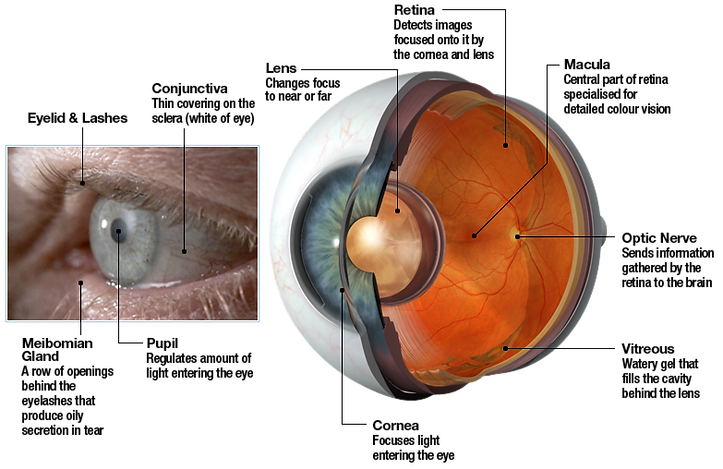The Human Eye
Eye Conditions
Cataract
CSCR
Diabetic Retinopathy
Epiretinal Membrane
Flashes and Floaters
Glaucoma
Macular Degeneration
Macular Hole
Retinal Detachment
Retinal Vein Occlusion
Uveitis
Vitreomacular Traction
Investigations
Procedures



The human eye works like a camera. At the front is the cornea and lens. They focus the images we see on the retina at the back of the eye. The retina detects the image, like the film in a camera, and sends the information to the brain via the optic nerve. The central part of the retina is called the macula. The macula is specialised for detailed central vision, such as reading, driving and recognising faces. The rest of the retina allows us to see a wide field of view, but it cannot provide sharp vision. If the macula is damaged, the vision will be blurred even though the peripheral vision remains intact.
How the human eye works